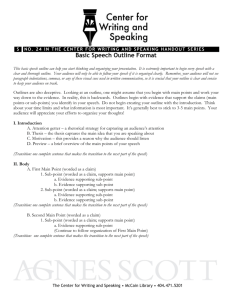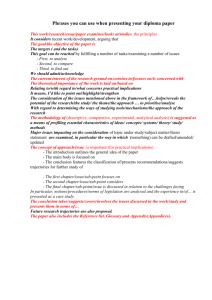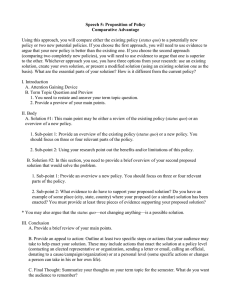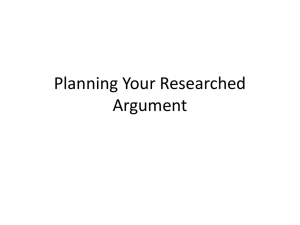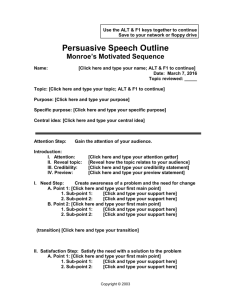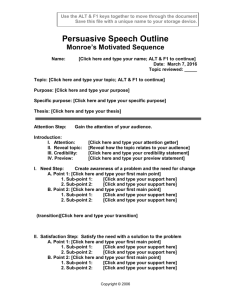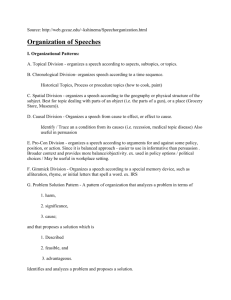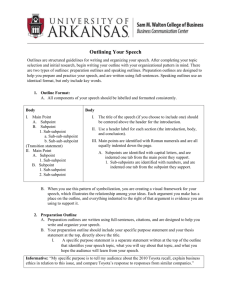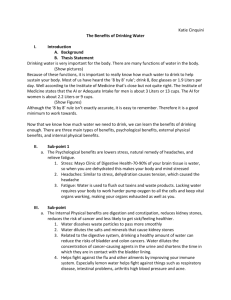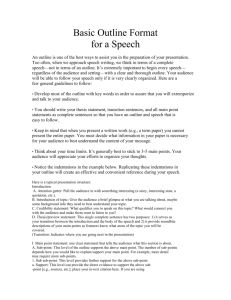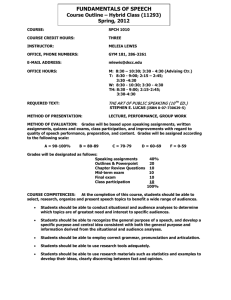Basic Speech Outline Format
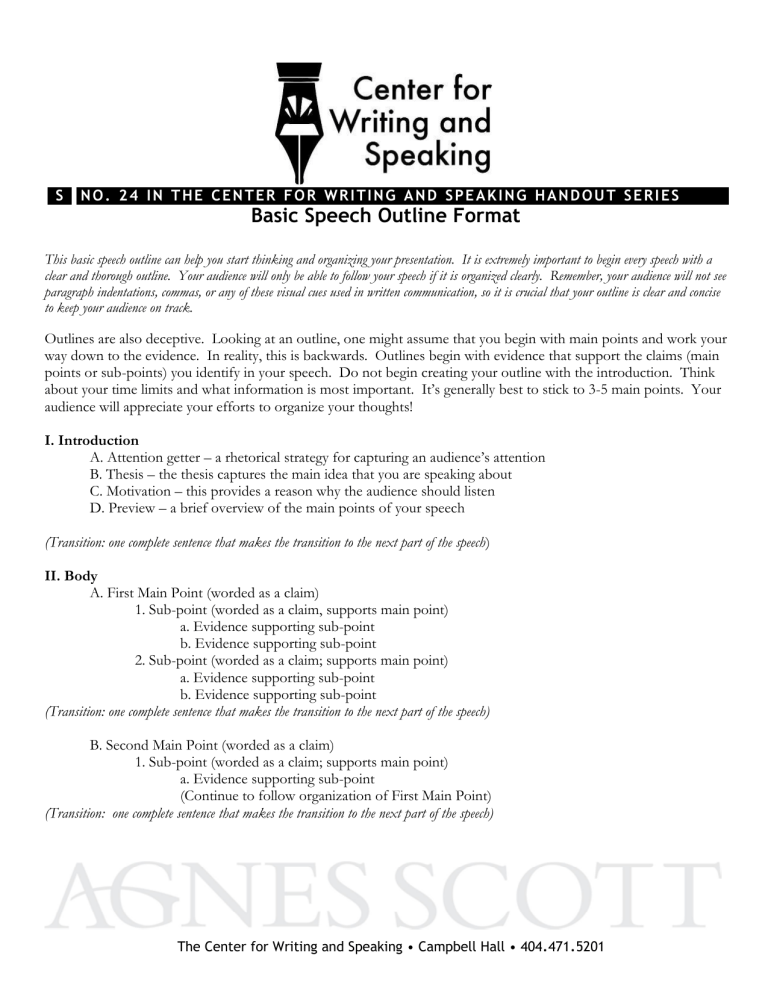
S N O . 2 4 I N T H E C E N T E R F O R W R I T I N G A N D S P E A K I N G H A N D O U T S E R I E S
Basic Speech Outline Format
This basic speech outline can help you start thinking and organizing your presentation. It is extremely important to begin every speech with a clear and thorough outline. Your audience will only be able to follow your speech if it is organized clearly. Remember, your audience will not see paragraph indentations, commas, or any of these visual cues used in written communication, so it is crucial that your outline is clear and concise to keep your audience on track.
Outlines are also deceptive. Looking at an outline, one might assume that you begin with main points and work your way down to the evidence. In reality, this is backwards. Outlines begin with evidence that support the claims (main points or sub-points) you identify in your speech. Do not begin creating your outline with the introduction. Think about your time limits and what information is most important. It’s generally best to stick to 3-5 main points. Your audience will appreciate your efforts to organize your thoughts!
I. Introduction
A. Attention getter – a rhetorical strategy for capturing an audience’s attention
B. Thesis – the thesis captures the main idea that you are speaking about
C. Motivation – this provides a reason why the audience should listen
D. Preview – a brief overview of the main points of your speech
(Transition: one complete sentence that makes the transition to the next part of the speech )
II. Body
A. First Main Point (worded as a claim)
1. Sub-point (worded as a claim, supports main point) a. Evidence supporting sub-point b. Evidence supporting sub-point
2. Sub-point (worded as a claim; supports main point) a. Evidence supporting sub-point b. Evidence supporting sub-point
(Transition: one complete sentence that makes the transition to the next part of the speech)
B. Second Main Point (worded as a claim)
1. Sub-point (worded as a claim; supports main point) a. Evidence supporting sub-point
(Continue to follow organization of First Main Point)
(Transition: one complete sentence that makes the transition to the next part of the speech)
The Center for Writing and Speaking • Campbell Hall • 404 .
471 .
5201
S N O . 2 4 I N T H E C E N T E R F O R W R I T I N G A N D S P E A K I N G H A N D O U T S E R I E S
Basic Speech Outline Format, Continued
C. Second Main Point (worded as a claim)
1. Sub-point (worded as a claim; supports main point) a. Evidence supporting sub-point
(Continue to follow organization of First Main Point)
III. Conclusion
A. Summary – brief review of the main points
B. Closure – brings the speech to its completion; lets the audience know the speech is over
The Center for Writing and Speaking • Campbell Hall • 404 .
471 .
5201
